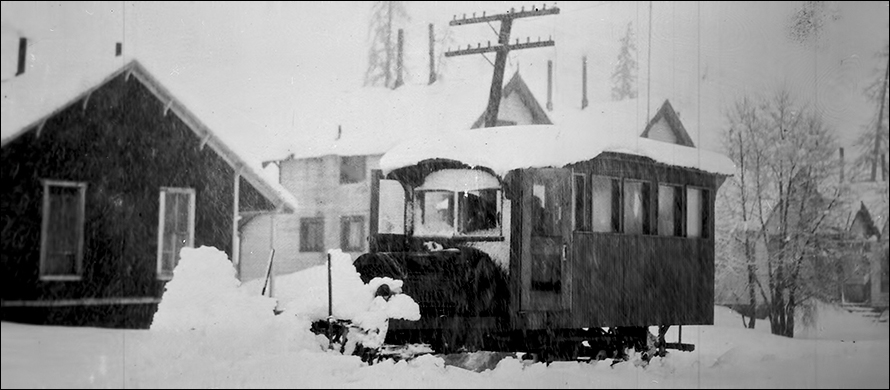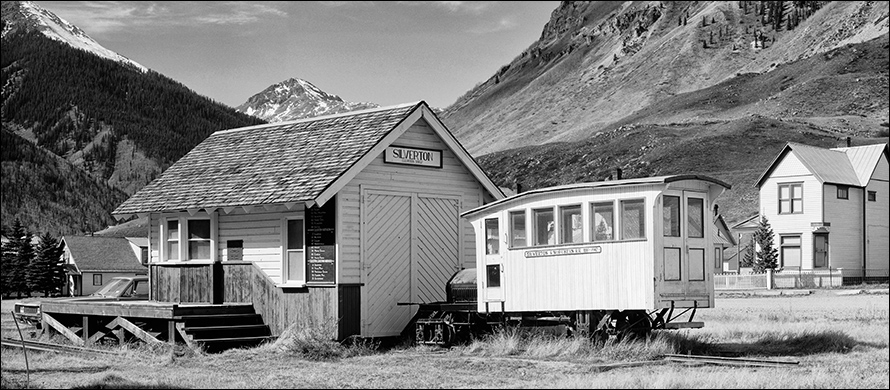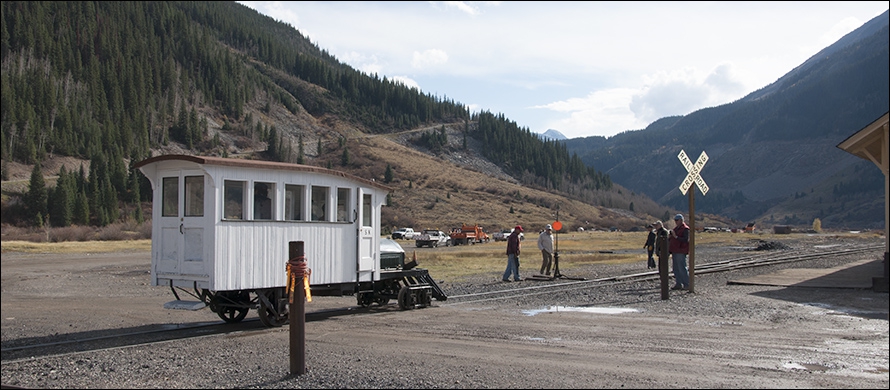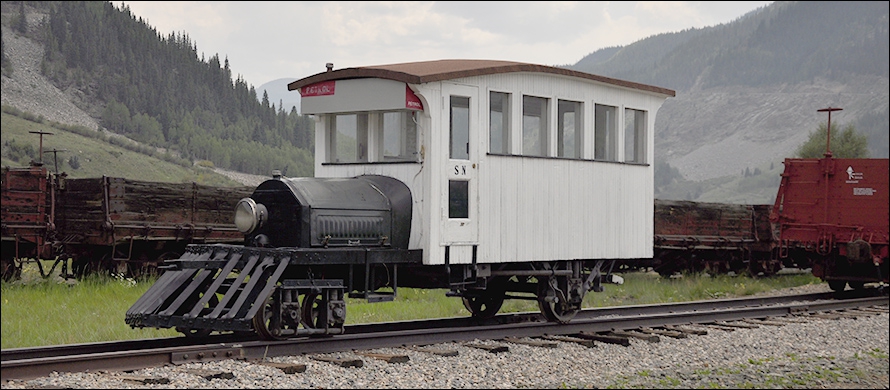
By Kevin Baldwin
(Current Casey Jones Mechanic & Driver)

In The Silverton Standard Newspaper dated July 10, 1915 is the first record regarding The Casey Jones railbus reporting that it had jumped the tracks. The Casey Jones did not belong to the Silverton Northern RR. It was designed and built by Clyde Jones, and owned by the Sunnyside Mill and Mine at Eureka as an 11 passenger railbus using a 4-wheel pilot truck, 2-wheel rear truck that was chain driven, brakes operated by turning the steering wheel, a Maxwell motor, and junk parts. It is likely that the former Stover railbus was part of the junk. The railbus had a special jack built-in for turning it around, and brooms were mounted just behind the pilot to clean the rails ahead of the railbus. In 1918 after another misfortune it was rebuilt again, at a cost of $1,000 with the current Cadillac Series 51 chassis, engine, transmission, driveshaft and differential. The justification for building the Casey Jones was as an ambulance, so the Casey Jones was intended as a faster way to get injured employees to town. However, it was mainly used for the mine and mill employees to go to Silverton for their lodge meetings and other social occasions.
In 1915, Cadillac was the first motorcar company to mass produce a V8 engine. Other motorcar companies had made V8 engines, but not to the production level Cadillac did in 1915. The Casey Jones retains the Cadillac engine, drivetrain, dash, seat and chassis. The Cadillac front axle was replaced with a 4-wheel narrow gauge railroad truck. The rear differential had the drum brakes and wheel ends removed and replaced with sprockets driving chains to the rear 2-wheel truck. The current braking is accomplished by a driveshaft brake, and a track brake operated with the steering wheel that clamps on wheels of the rear 2-wheel truck. In the summer of 1929 the Casey Jones was rebuilt again to its current configuration. The Stover railbus body was removed and replaced with the current bus style body that could seat 12 people including the driver/engineer. The 12 passenger bus body was built by Hans Tanstad in the Eureka Carpenter Shop.
The Cadillac engine is a flathead V8, 314 cubic inch displacement, producing 70 horsepower. The transmission is a 3-speed non-synchronized manual transmission connected by a driveshaft to a differential. Another Cadillac first was the electric starter. A Cadillac engineer witnessed a man hand cranking an engine when it kicked back, broke the man's arm, and the man died as a result of this incident. The electric starter motor design overloaded a motor for a short time so it would be able to produce enough work to turn over the engine until it started. It was designed to operate for short periods of time since the motor was operating in an overloaded condition. The IEEE that represents electrical engineers was not happy that a motor was being operated under these overloaded conditions.
The 1915 V8 engine is square in appearance as it has each pair of cylinders across from each other on the same fork & spade connecting rod assembly. The firing order is 1L-2R-3L-1R-4L-3R-2L-4R. In 1923 this engine was redesigned into a split-pin configuration that has one bank of cylinders offset from the other to allow each piston to have its own connecting rod and it produced 83.5 horsepower. The split pin configuration is much smoother. When revving the Casey Jones engine the vibration increases with RPM and it is apparent this engine design prefers lower RPM operation. The exhaust system consists of a straight pipe on each bank of the engine exiting in front of the rear 2-wheel truck just below the bus body. The exhaust system has the note of a high performance engine.
The magneto/motor/generator on the Cadillac V8 in the Casey Jones was manufactured by DELCO, Dayton Engineering Laboratories Company. This electrical unit has a small distributor that is gear driven by the motor/generator shaft. When starting the Casey Jones the flat faced spur gears of the motor/generator drive and the engine ring gear must mesh before electrical power is provided to the motor. If the gears don't mesh the engine must be rotated, by turning the engine cooling fan, so they can mesh. This feature of the linkage keeps the gears from damaging each other. Once the gears have meshed the linkage allows a brush to contact the commutator and the motor turns over the engine. When the engine starts the gears stay engaged, but the brush that contacted the commutator raises and the motor becomes a generator providing electrical power for the Casey Jones. The Voltage is regulated by a spool with resistive wire wrapped around it. Currently the resistance of the wire has changed allowing the generator to charge only at high engine RPM, which is the RPM range causing this engine to vibrate. The electrical system is a 6-Volt, positive ground system.
The only plans known of for the Casey Jones were drawn by Ken Pruitt in the Rainbow Route, a book by Robert Sloan and Carl Skowronski. Unfortunately, this book is out of print, but can be found in some libraries and bookstores specializing in used RR books. The bulk of the information providing the history of the Casey Jones railbus came from the pages of the Rainbow Route.




